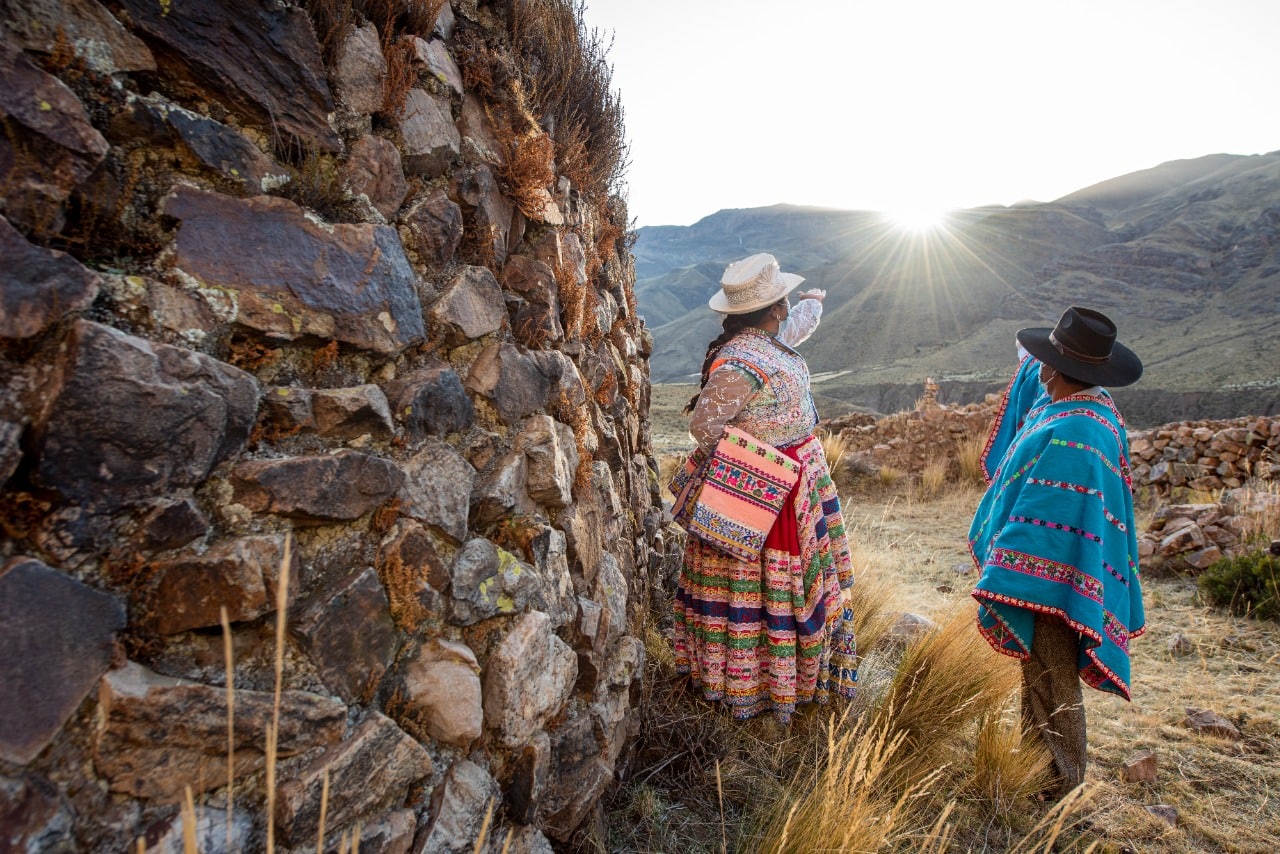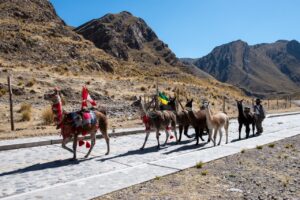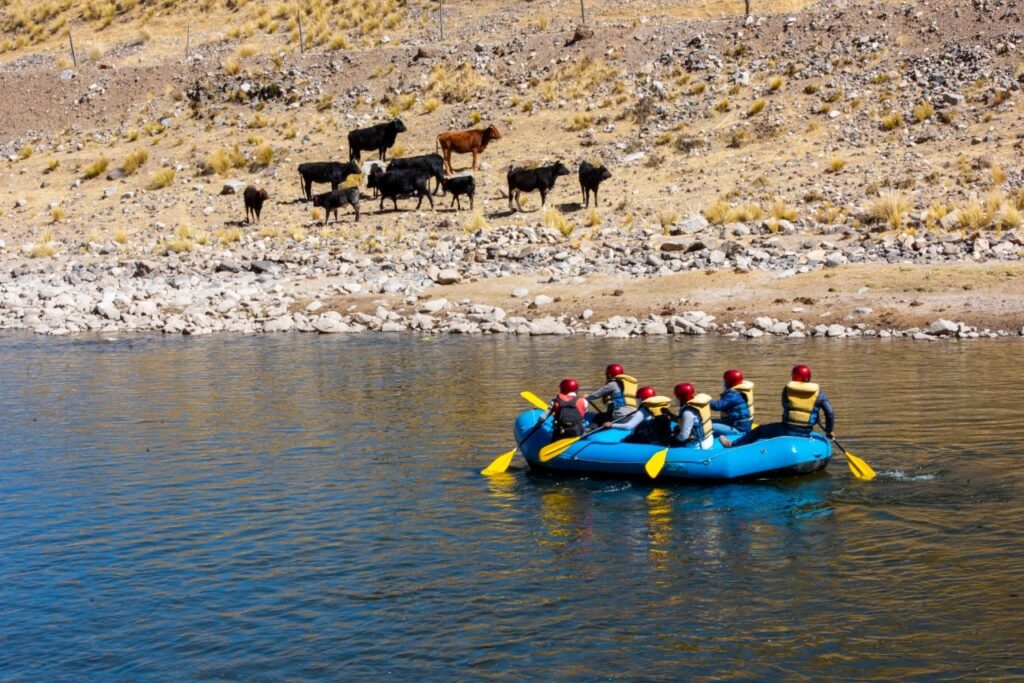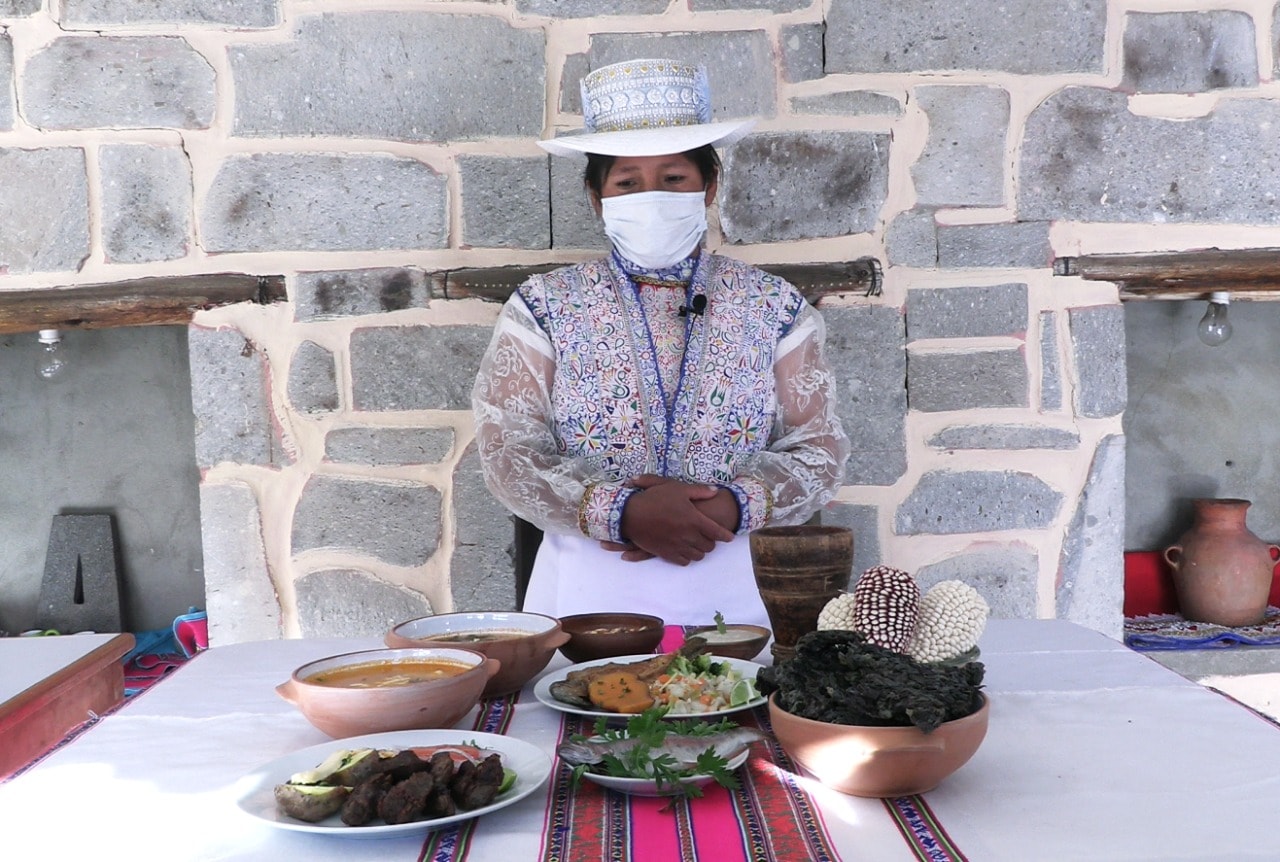Every year, Green Destinations organizes the Top 100 Destination Sustainability Stories competition, which invites submissions from around the world – a vetted collection of stories spotlighting local and regional destinations that are making progress toward sustainable management of tourism and its impacts. From the 100 winners announced in October 2021, this story, from the Colca Cañon of Perú, shows how an impoverished community with pride in its culture and traditional architecture can turn itself into a heritage adventure destination: Sibayo.

Submitted by Jeniffer Stephanie Diaz Santivañez, Promotor Touristico.
From Alpacas to Tourists: How the Village of Sibayo Grew a Business
The rural, pre-Hispanic town of Sibayo, nestled in the province of Caylloma, Peru, has met the test of time. Its traditional stone architecture and its living Collagua culture have survived to this day. However, in its recent history, Sibayo was all but forgotten to those outside the Colca Valley. Facing high poverty levels, malnourishment, and inequities that resulted in a period of high migration, the municipality looked towards solutions to better the lives of their community while simultaneously preserving its unique heritage. Thus, the small town began its push from a livestock production economy to a community-based tourism economy.
In 2001, the town set out an objective to diversify its economic activities and open up the rural community to tourism, using a framework that bridges the private sector, local authorities, and civil society.


As Sibayo began to gain attraction, the community evolved and new experiences sprung up, such as hiking to archeological remains, canoeing, cycling, and living the local culture. Women also began to have a leading role in tourism efforts, establishing 12 women-run microenterprises, which has resulted in improved gender equality and women’s empowerment in the region. By implementing community-based tourism, Sibayo’s economy has become dynamic, and tourism has positively affected the economy. The success of the community-based tourism framework has depended on connections between governments, the local people, and private organizations. Thanks to this tourism framework, the locals have been able to access housing sanitation services, improving the living conditions of the community.


